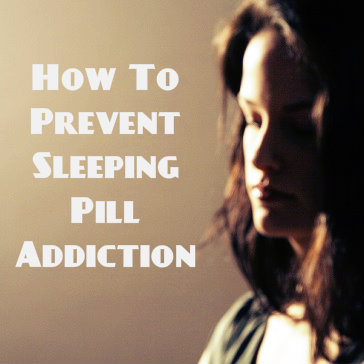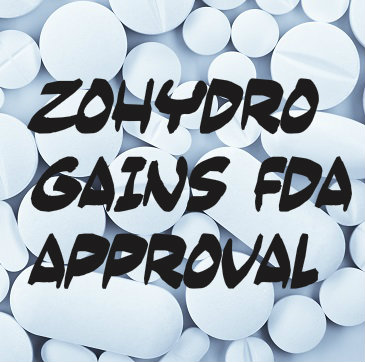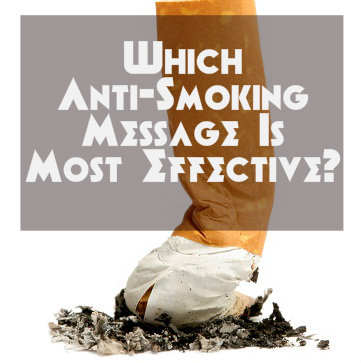01 Aug 2014
How To Avoid Getting Hooked On Sleeping Pills
When most of us think about addiction, we envision someone shooting up heroin, smoking meth or drinking nonstop. Did you know that you can develop a dependence on drugs that seem much more harmless? We tend to think of prescriptions as safe because they are prescribed by doctors, but you should always be aware of the risks of any drugs you take. Sleeping pills are used commonly in the U.S. and it is possible to become addicted to them. If you need sleep aids, find out what the dangers are and learn how not to become dependent on them.
Can A Pill Cure My Sleeping Problems?
 Too many people rely on sleep aids to get a good night’s rest without dealing with their underlying problems. Being unable to sleep is usually a symptom of another problem. You may struggle to sleep because you have another medical condition, but it’s more likely that your insomnia is related to stress. While a sleep aid may help you get some rest, it is not the answer to your problems. Sleeping pills are designed for short-term use, not for lifelong treatment.
Too many people rely on sleep aids to get a good night’s rest without dealing with their underlying problems. Being unable to sleep is usually a symptom of another problem. You may struggle to sleep because you have another medical condition, but it’s more likely that your insomnia is related to stress. While a sleep aid may help you get some rest, it is not the answer to your problems. Sleeping pills are designed for short-term use, not for lifelong treatment.
Are Sleeping Pills Addictive?
If you do use your sleep aid for a long period of time or if you deviate from your doctor’s instructions, you run the risk of experiencing side effects, of not solving the underlying problem causing insomnia and of developing a dependence on the medication. The risk level depends on the medication. Sleep aids include those that help you fall asleep and those that help you stay asleep through the night.
In the first category is Lunesta, which can cause withdrawal symptoms, and Halcion and Sonata, both of which are habit-forming. Among the drugs that can help you stay asleep all night are Estazolam and Restoril, both of which are also habit-forming. There are other sleeping pills that can be prescribed, which are not habit-forming and which do not cause withdrawal when you stop using them. Each one comes with its own list of side effects and some may not work well for you. Which one you take is a decision you and your doctor should make.
Some prescription sleeping pills are habit-forming, which means they are susceptible to abuse and can lead to addiction. Even with those medications that are not considered addictive, there is a risk of developing dependence. When you rely on a pill to get to sleep at night you may become psychologically dependent on it. The idea of not having that crutch to help you sleep can cause anxiety and lead you to keep using the medication, even when you no longer need it.
How Can I Take Sleeping Pills Safely?
The most important consideration in taking prescription sleep aids is to follow your doctor’s instructions. Speak up and discuss with your doctor if you feel like you are becoming dependent on your sleeping pill. Even over-the-counter sleep aids can lead to dependence if you are relying on them every night. If you need to take one for several nights in a row, talk to your doctor so that you can address the underlying reasons for your insomnia.
A sleep aid can be a good way to catch up on rest, but it is not a solution to your problem. Make sure that you get treatment for your insomnia. This may mean going through counseling to address any psychological issues keeping you awake, or trying natural methods or alternative medicine. Always take care when using prescriptions of any kind and keep yourself informed as to the risks and the possibility of dependency.
28 Jul 2014
Why Smokers Know About Quitlines, But Don’t Call
Smoking quitlines are telephone-based services that provide support and advice for people trying to kick the habit. In combination with the care provided by an addiction specialist or other qualified health professionals, use of one of these services can significantly increase the chances that a current cigarette user will successfully stop smoking. In a study published in May 2014 in the journal Nicotine & Tobacco Research, researchers from three U.S. institutions used information from a project called the National Adult Tobacco Survey to estimate how many U.S. smokers know that smoking quitlines exist.
 In the majority of cases, adult and teenage users of cigarettes in the U.S. and throughout the world are addicted to nicotine. Nicotine addiction is common among smokers, in part, because of the need to use the drug repeatedly in order to keep feeling its desired effects on the brain’s pleasure levels. Once a nicotine addiction is established, frequently repeated brain exposure to the drug also helps account for the difficulties that commonly appear during smoking cessation attempts. In fact, even people who eventually quit smoking typically fail to break their reliance on cigarettes/nicotine at least once.
In the majority of cases, adult and teenage users of cigarettes in the U.S. and throughout the world are addicted to nicotine. Nicotine addiction is common among smokers, in part, because of the need to use the drug repeatedly in order to keep feeling its desired effects on the brain’s pleasure levels. Once a nicotine addiction is established, frequently repeated brain exposure to the drug also helps account for the difficulties that commonly appear during smoking cessation attempts. In fact, even people who eventually quit smoking typically fail to break their reliance on cigarettes/nicotine at least once.
Addiction specialists and public health officials know that the odds of achieving smoking cessation success go up sharply for people who seek professional help and use one of the proven methods for quitting smoking. These methods include nicotine replacement therapy, the use of either of two nicotine-free medications called buproprion (Zyban) and varenicline (Chantix), and the use of any of several forms of behavioral therapy or counseling.
Smoking Quitlines
Some people aren’t sure exactly where to turn when they make the decision to stop smoking. Others may lack some or all of the resources needed to secure help from a doctor or involvement in a smoking cessation program. Smoking quitlines are publicly available options that provide smoking cessation-related information and advice to anyone interested in pursuing smoking cessation, regardless of considerations such as place of residence or level of income. All 50 states in the U.S. have such quitlines established, the National Cancer Institute’s Smokefree.gov reports. In addition, some quitlines operate nationally. As a rule, state and national quitlines employ counselors specifically trained to give advice remotely and direct callers to appropriate sources of support in their local areas.
How Many Smokers Know About Quitlines?
The National Adult Tobacco Survey (NATS) is a nationwide project that tracks tobacco use rates, and also tracks the underlying factors that make it more or less likely that any given person will start smoking or continue to smoke after initiating cigarette use. In the study published in Nicotine & Tobacco Research, researchers from the Centers for Disease Control and Prevention, Emory University and UC San Diego used data from the most recent version of NATS (conducted in 2009 and 2010) to estimate how many smokers in the U.S. know that smoking quitlines exist. The researchers also used the NATS data to identify the demographic factors (racial/ethnic background, gender, socioeconomic standing, etc.) that make it more or less likely that any particular smoker will know about quitlines. In addition to checking awareness levels among current smokers, they checked awareness levels among people who used to smoke and people who had never smoked.
The researchers concluded that more than half (53.9 percent) of current smokers know that smoking quitlines exist. In addition, 34 percent of ex-smokers and 27 percent of people with no history of smoking know about quitlines. Among active smokers who try to quit, the groups most likely to know that smoking quitlines exist are women, people who have recently visited a doctor and people who live in states that devote considerable amounts of money to anti-smoking efforts. Conversely, the groups of active smokers interested in quitting who are least likely to know that smoking quitlines exist include people who make less than $50,000 a year, African Americans and other people of non-Hispanic/Latino descent.
Who Is Most Likely To Use A Smoking Quitline?
Despite the respectable level of awareness of smoking quitlines among active smokers, the authors of the study found that only 7.8 percent of active smokers who attempt to stop using cigarettes call a quitline. The groups of active smokers most likely to utilize a quitline are people who receive advice from a doctor, people who live in states with well-funded anti-smoking programs and African Americans and other people of non-Hispanic/Latino descent. Older adults form the single group of active smokers least likely to contact a smoking quitline. The study’s authors note that awareness of smoking quitlines among active smokers varies widely from state to state.
Discover Which Anti-Smoking Message Is Most Affective On Smokers?
14 May 2014
The Changing Face Of Heroin Addiction
Heroin abuse, addiction, and overdoses have all been rising over the last decade. New users of heroin have risen from 90,000 to 156,000 per year. The use of other drugs in the U.S. has dropped over the same time period. In addition to the overall increase in use of heroin, demographics are also shifting. Once a drug concentrated in the inner cities, heroin has spread to the suburbs and to rural areas. Today a heroin addict could be anyone of any socioeconomic status, age or race.
Who Is Using Heroin?
There was a time when you would be shocked to learn that an upstanding citizen and contributing member of society was hooked on heroin, but today the drug has infiltrated all areas of the country and all levels of society. According to one newsworthy profile, a woman who is a teacher and a mother living in Putman County, New York is also a heroin addict with track marks running down her arms. She admittedly came to work high on heroin and even used the drug in the staff bathroom during the day.
Another story tells the tale of a retired police captain moving his family from the city to the Chicago suburbs, hoping to distance his children from harmful influences. Instead of finding a more wholesome environment, his teenaged son was introduced to drugs and eventually overdosed and died from using heroin. He was not the only one among his teenage friends to meet that fate.
In Vermont, one of the most rural and sparsely populated states in the country, heroin use has reached epidemic proportions. The situation is so dire that the governor devoted an entire State of the State address this year to the issue of heroin abuse and overdose deaths. These are just a few of the stories demonstrating how the face of heroin addiction has changed over the last decade. You can no longer assume that all heroin addicts are inner city junkies. They are all around you.
What Accounts for the Rise in Heroin Abuse?
The shift in populations that use heroin and just how epidemic the problem is seem puzzling at first glance. There is a simple reason for the changes and it can be traced back to prescription painkillers. Narcotic painkillers are similar to heroin. They are both opioids, meaning they are derived from the opium poppy. They act in similar ways in the brain, produce the same kind of high and lead to the same devastating addiction.
For years, doctors have been prescribing narcotic painkillers in large amounts because they are good at what they are supposed to do: they control pain. The downside is that these medications are highly addictive and susceptible to abuse. With more prescriptions floating around and being passed and sold from one person to the next, many people became addicted. As the problem grew, doctors prescribed fewer narcotics and tighter restrictions were placed on these drugs. Those already hooked on them struggled to get the pills they needed.
Drug dealers had the answer for these narcotic addicts desperate for the next fix: cheap and available heroin. Heroin is now cheaper and easier to find than pain pills, so addicts naturally turned to this illegal drug to feed their habits. The drug cartels have seen an opportunity and have made sure to meet the demand with supplies of cheap heroin in cities, suburbs and rural states like Vermont. The face of heroin addiction has changed and unless steps are taken to treat these people and to prevent new addictions, the problem will continue to grow.
Read More About The Chronic Use Of Heroin Being On The Rise
An opioid overdose is a situation that occurs when a person using an opioid drug or medication takes too much of the substance in question and experiences a serious slowdown or complete halt of certain critical body functions. Some people die from such an overdose, while others survive after receiving treatment. In a study scheduled for publication in April 2014 in the journal Mayo Clinic Proceedings, researchers from Harvard-affiliated Massachusetts General Hospital looked at the potential health outcomes for people who experience repeated opioid overdoses. These researchers also examined the factors that make repeated opioid overdoses more likely to occur.
What Are Opioids?
 n addition to producing a pleasurable sensation called euphoria and diminishing the ability to feel physical pain, opioid drugs and medications slow down the baseline rate of activity inside both the brain and the spinal cord (known collectively as the central nervous system). If a legitimate opioid user or opioid abuser or addict keeps his or her intake within certain limits, he or she will experience only fairly modest changes in the function of these organs, which together produce and coordinate the nerve impulses required to keep the heart beating and the lungs inhaling and exhaling. However, if he or she takes too much of the opioid in question, central nervous system activity will fall below a critical point and the required nerve impulses will not be maintained. This dangerous and potentially lethal nerve signal disruption marks the onset of an opioid overdose. People who die from such an overdose typically experience an unsustainable decrease in their normal lung function.
n addition to producing a pleasurable sensation called euphoria and diminishing the ability to feel physical pain, opioid drugs and medications slow down the baseline rate of activity inside both the brain and the spinal cord (known collectively as the central nervous system). If a legitimate opioid user or opioid abuser or addict keeps his or her intake within certain limits, he or she will experience only fairly modest changes in the function of these organs, which together produce and coordinate the nerve impulses required to keep the heart beating and the lungs inhaling and exhaling. However, if he or she takes too much of the opioid in question, central nervous system activity will fall below a critical point and the required nerve impulses will not be maintained. This dangerous and potentially lethal nerve signal disruption marks the onset of an opioid overdose. People who die from such an overdose typically experience an unsustainable decrease in their normal lung function.
The United Nations Office on Drugs and Crime lists a number of common contributing factors to an opioid overdose. These factors include widespread access to both legal and illicit/illegal opioid substances, the use of opioids in combination with other mind-altering substances, limited access to treatment options for people addicted to opioid substances and an increased susceptibility to the effects of opioids in people who relapse back into drug/medication abuse after a period of full or partial abstinence. All individuals who abuse opioids run the risk of experiencing a fatal or non-fatal overdose, whether or not they have an addiction to opioid use.
Repeated Overdose Consequences
In the study scheduled for publication in Mayo Clinic Proceedings, the Massachusetts General Hospital researchers used information gathered from close to 20,000 adult opioid users to assess the health consequences of experiencing more than one non-fatal opioid overdose. All of these individuals had survived at least one overdose event involving a legal or illegal opioid; 1,400 of them had survived two to five such events. Although they represented only 7 percent of the study participants, the survivors of multiple events represented roughly 15 percent of the total number of overdoses among the participants. After comparing the single overdose survivors to the multiple overdose survivors, the researchers concluded that the multiple overdose survivors are significantly more likely to require hospitalization to deal with the effects of their condition. Once hospitalized, they are also significantly more likely to require breathing assistance from a ventilator to stay alive.
Repeated Overdose Factors
The researchers concluded that several factors contribute to the likelihood that a person will experience more than one opioid overdose. These factors include having relatively few financial resources, having public health insurance rather than private health insurance, having a diagnosable case of substance addiction, having a diagnosable mental illness, having an illness that affects normal nervous system function and having a chronic lung illness. The single demographic category most likely to experience multiple opioid overdoses is middle-aged white men.
The authors of the study scheduled for publication in Mayo Clinic Proceedings note that first-time cases of opioid overdose also frequently result in hospitalization. People undergoing additional overdoses merely have a higher chance of being hospitalized. First-time victims of opioid overdoses also sometimes require the use of a mechanical ventilator. Again, victims of multiple overdoses merely have greater odds of needing this extreme medical measure. The study’s authors believe that their findings point toward a need to improve local, state and nationwide efforts to lower the opioid overdose rate. They also point toward a need for improved understanding of the factors that contribute to overdose in people using prescribed opioid painkilling medications.
Read About IV Opioid Users Show Interest In Buprenorphine Treatment
The FDA’s approval of a drug it says “will fill an important niche” in the treatment of chronic pain has caused a huge uproar over fears about its potential for abuse.
Zohydro was given the go-ahead in October 2013 for the treatment of moderate-to-severe chronic pain. Developed by the pharmaceutical company Zogenix, Zohydro is composed of an unmixed, undiluted 50-milligram shot of the opioid analgesic hydrocodone, which is the primary ingredient in the well-known and widely prescribed pain-relieving drug Vicodin. Zohydro is approximately five times more potent than Vicodin, however, and according to FDA Commissioner Dr. Margaret Hamburg, it will fill “an important and unique niche” in the crowded prescription painkiller marketplace. Zohydro was released in March, and all patients who receive a chronic pain diagnosis will now be eligible to obtain a prescription for this powerful narcotic.
 But the FDA’s decision to approve the release of Zohydro was highly surprising, since its own advisory panel had voted 11-2 against approval. The medical authorities appointed to this panel cited the highly addictive nature of opioid medications as the rationale for their thumbs-down verdict. In the months that have passed since the Zohydro ruling, the criticism directed at the FDA has only intensified, and the agency has been forced to repeatedly defend a decision that many see as indefensible.
But the FDA’s decision to approve the release of Zohydro was highly surprising, since its own advisory panel had voted 11-2 against approval. The medical authorities appointed to this panel cited the highly addictive nature of opioid medications as the rationale for their thumbs-down verdict. In the months that have passed since the Zohydro ruling, the criticism directed at the FDA has only intensified, and the agency has been forced to repeatedly defend a decision that many see as indefensible.
Addiction to pharmaceutical-grade painkillers has reached epidemic proportions, and the U.S. Centers for Disease Control has confirmed that opioids like OxyContin and Vicodin are the primary villains in this unfolding tragedy. Many medical professionals apparently came to view these drugs as panaceas and began prescribing them for all degrees of pain and a vast assortment of conditions, and, as a result, opioid addiction rates exploded. Since Zohydro is just a turbo-charged version of Vicodin, it is likely to be far more addictive than its milder cousin, and many medical experts believe it is the height of folly, if not downright hypocritical, for the government to be putting such a potentially dangerous substance into circulation at a time when the fight against prescription drug abuse has just begun to pick up steam.
In September 2013, the FDA announced it was actually tightening label restrictions on opioid painkillers, recommending that physicians use them only with patients who needed round-the-clock treatment for chronic pain and when there were no other viable treatment options available. This action was unequivocally justified as a strategy to combat addiction, so observers were taken aback when only one month later the FDA chose to approve a drug that threatens to accelerate the opioid addiction problem.
Critics of the FDA’s decision launched a campaign to convince the organization to change its minds, and representatives of more than 40 influential healthcare/addiction treatment organizations signed and submitted a letter to the agency that outlined the dangers of adding Zohydro to the menu of available opioid painkillers. But this ardent plea from the experts was to no avail, and the FDA steadfastly refused to reverse its puzzling course.
The (Evil) Genie in the Pill Bottle
The FDA is often accused of having an overly cozy relationship with big pharma and big agriculture, the industries it has been tasked with regulating, and this decision to legalize a new narcotic painkiller despite the negative judgment of its handpicked medical advisors would seem to represent a triumph of favoritism over sensible public policy. In response to what many see as an outrage, separate bills have now been introduced in the House and Senate that if passed would compel the FDA to remove Zohydro from the marketplace.
Compounding the situation, later in the year the drug giant Purdue Pharma will release another single-ingredient/high-dose hydrocodone painkilling drug, in a tamper-resistant form that may render Zohydro obsolete. This company already sells a tamper-resistant version of OxyContin, which allegedly cannot be crushed or dissolved for chewing or snorting and therefore is not supposed to be as addictive (chewing or snorting opioids delivers a more concentrated dosage to the bloodstream). A less malleable form of mega-jolt hydrocodone would presumably offer the same advantages, and the folks manufacturing Zohydro would likely have to switch to a tamper-resistant form themselves if they expected their drug to survive.
But addiction treatment specialists dispute the notion that making addictive drugs harder to alter makes them less dangerous. They note that virtually every person who has become dependent on opioid painkillers started out swallowing pills and only later resorted to chewing or snorting when their substance abuse problems raged out of control. Nevertheless, many fear the positive PR that tamper-resistant technology has received may help to defuse some of the opposition that this new class of drugs has generated, assuming they do eventually show up on the marketplace in this more “respectable” form.
Read How Big Pharma Is Testing Super Painkillers
02 May 2014
Heroin Use In Kentucky Growing At Alarming Rates
Obtaining prescription drugs for non-medical purposes is often as simple as pilfering a medicine cabinet, but with national efforts aimed at curbing the misuse and abuse of prescription drugs there may be a changing trend in the popularity of prescription drugs versus street drugs. A report highlights the emerging increase in heroin use in Kentucky, and national trends mirror that data.
The report from the Kentucky Injury Prevention and Research Center (KIPRC) analyzes overdoses in Kentucky as well as associated mortality and financial consequences on the population. KIPRC is part of the University of Kentucky’s College of Public Health and is in partnership with the Kentucky Department for Public Health.36
The findings show that the number of total overdoses resulting in death or emergency room visits remained stable from 2011 to 2012. In addition, the number of overdoses due to benzodiazepines and prescription opioids decreased in that same period.
Why Are There So Many People Overdosing?
 The primary reason for overdose deaths in Kentucky was pharmaceutical opioids, and benzodiazepines were the primary drugs related to overdose ER visits, but they decreased nine percent, from a total of 939 visits in 2011 to 856 in 2012. The primary reason that admission was made for a stay in the hospital related to overdose was self-harm. The highest rates of overdose between 2008 and 2012 were found in Casey, Johnson, Carroll, Powell, and Nicholas Counties.
The primary reason for overdose deaths in Kentucky was pharmaceutical opioids, and benzodiazepines were the primary drugs related to overdose ER visits, but they decreased nine percent, from a total of 939 visits in 2011 to 856 in 2012. The primary reason that admission was made for a stay in the hospital related to overdose was self-harm. The highest rates of overdose between 2008 and 2012 were found in Casey, Johnson, Carroll, Powell, and Nicholas Counties.
The decrease in benzodiazepines and opioids may be explained by an increase in heroin use. There was a significant increase in inpatient hospitalization deaths and ER visits due to heroin use – 129 fatal overdoses in 2012, a 207 percent increase over the 42 deaths in 2011. There was also a 174 increase in hospitalizations and a 197 percent increase in ER visits related to heroin overdose.
The Substance Abuse and Mental Health Services Administration (SAMHSA) has also documented the increase in heroin use on a national scale. SAMHSA reports that heroin use grew by 80 percent from 2007 to 2012.
Likewise, the Centers for Disease Control and Prevention shows a 55 percent increase in overdose deaths related to heroin use for the period from 2000 to 2010. Many experts believe that the increase of heroin use and the decrease of prescription drug abuse are related.
The KIPRC report also provides an analysis of the costs that Kentucky incurs due to drug overdose. The total financial toll for the state rose by seven percent to $129.3 million in 2012, with $41.3 million billed to Medicare and $34.1 million to Medicaid.
Terry Bunn, PhD, director of KIPRC, says that the problem requires a comprehensive approach to finding strategies to alleviate the levels of drug abuse and the cost of treatment in Kentucky. The state needs to identify risk factors that lead to drug overdoses and develop interventions that prevent the likelihood of a drug overdose, she says. In addition, the report’s findings support the need for increased availability of naloxone, an opiate antidote that can be used by first responders as a lifesaving measure to prevent fatal overdose.
The United States is awash in opioid painkillers with addiction rampant. Since 1999 prescriptions for opioids have tripled and the number of opioid-related deaths have quadrupled, with legally prescribed medications now accounting for 60 percent of drug overdoses. There are five million Americans currently addicted to opioids, and three out of four overdose fatalities are caused by opioids. So do we really need another opioid medication? Do the benefits outweigh the risks?
What Is Zohydro?
 A new opioid called Zohydro, approved by the Food and Drug Administration (FDA) in late 2013, is Hydrocodone with an extended, 12 hour release formula. For comparison, the painkiller Vicodin is Hydrocodone with acetaminophen. Zohydro has no acetaminophen – it’s unadulterated Hydrocodone that has been described as five or 10 times stronger than Vicodin. A single tablet could kill a child, and two pills could be enough to kill an older person unaccustomed to opioids.
A new opioid called Zohydro, approved by the Food and Drug Administration (FDA) in late 2013, is Hydrocodone with an extended, 12 hour release formula. For comparison, the painkiller Vicodin is Hydrocodone with acetaminophen. Zohydro has no acetaminophen – it’s unadulterated Hydrocodone that has been described as five or 10 times stronger than Vicodin. A single tablet could kill a child, and two pills could be enough to kill an older person unaccustomed to opioids.
Additionally, the pills are not crush or addiction resistant. As the opioid epidemic grew, many manufacturers reformulated their pills in order to make them more difficult to abuse. One way to achieve this is to add certain ingredients to the pills which cause unpleasant side effects if they are crushed and snorted or injected. Those side effects are not present when the drugs are taken orally as prescribed. People addicted to opioids often snort or inject them in order to get a fast and intense high.
FDA Approval Of Zohydro
However, the FDA decided to approve Zohydro with none of these precautions in place. A loud outcry from doctors, congressmen, pharmacists, lawyers, addiction specialists and state Attorneys General followed. All of these and more have asked the FDA to reconsider its decision to approve the potent new drug. Add to the list the FDA’s own advisory panel which voted overwhelmingly (11-2) to withhold approval of Zohydro.
A group of experts has written a forceful letter to the FDA urging it to rethink its decision to approve Zohydro. The addiction risk is simply too overpowering, the experts explain.
A look at the benefits gained versus risks imposed lead experts to say this should be enough to halt the drug’s release. We already know it‘s impossible to keep drugs in the hands of pharmacists, physicians and legitimate patients. A certain amount will inevitably be diverted toward un-prescribed and illicit use. And that, in turn, will mean a surge in opioid addiction.
Experts agree that the more opioid pills available in the country, the greater the risks for addiction. So one would expect approval of new opioids to be very hard to come by, which is what makes the Zohydro case so very perplexing.
There is an already a climate of opioid abuse. Opioids without tamper-resistant formulas or addiction-resistant formulas are ripe for abuse. And important voices from every direction are crying “Stop!”
Read About Understanding Opioid Related Disorders
Smoking cessation messages are public health advertisements and campaigns designed to encourage current smokers to stop using cigarettes, which contain the addictive substance nicotine. Some of these ads and campaigns focus on the steps required to quit smoking, while others focus on the reasons for quitting smoking. In a study published in March 2014 in the American Journal of Health Promotion, a team of American researchers compared the effectiveness of “how-you-can-quit” smoking cessation messages to the effectiveness of “why-you-should-quit” messages as motivations for actually attempting to cease cigarette intake.
Get The Anti-Smoking Message
 An agency inside the U.S. Department of Health and Human Services called the Substance Abuse and Mental Health Services Administration uses nationwide, annual survey information to track smoking rates among U.S. adults and teenagers. All told, about 22 percent of Americans in this broad age range smoke cigarettes each month. The peak smoking rate of 34.1 percent occurs among people between the ages of 21 and 25. People between the ages of 26 and 29 have a slightly lower smoking rate of 33.4 percent; in addition, close to a third (31.9 percent) of individuals between the ages of 30 and 34 smoke cigarettes. Three other segments of the population (people between the ages of 18 and 20, people between the ages of 35 and 39, and people between the ages of 45 and 49) also have a monthly smoking rate of over 25 percent. The monthly smoking rate drops below 20 percent only in adults age 60 or older and in children 17 and younger.
An agency inside the U.S. Department of Health and Human Services called the Substance Abuse and Mental Health Services Administration uses nationwide, annual survey information to track smoking rates among U.S. adults and teenagers. All told, about 22 percent of Americans in this broad age range smoke cigarettes each month. The peak smoking rate of 34.1 percent occurs among people between the ages of 21 and 25. People between the ages of 26 and 29 have a slightly lower smoking rate of 33.4 percent; in addition, close to a third (31.9 percent) of individuals between the ages of 30 and 34 smoke cigarettes. Three other segments of the population (people between the ages of 18 and 20, people between the ages of 35 and 39, and people between the ages of 45 and 49) also have a monthly smoking rate of over 25 percent. The monthly smoking rate drops below 20 percent only in adults age 60 or older and in children 17 and younger.
What Are Smoking Cessation Messages?
All smoking cessation messages have a target audience. In some cases, this audience is fairly broad and includes smokers from a range of backgrounds and segments of the population. In other cases, the target audience for a message is fairly narrow and includes only a single segment of the larger group of teen or adult smokers. In addition, some messages appear in isolation while others appear as part of larger, coordinated campaigns that continue for extended periods of time. Smoking cessation ads and campaigns can come from private institutions or from various levels of county, state or federal government. In addition, they can appear in a number of media settings, including TV, print or online outlets. Examples of recent campaigns undertaken on a national level include Tips from Former Smokers (from the Centers for Disease Control and Prevention) and Smokefree Teen (from the National Institutes of Health).
Which Anti-Smoking Messages Work?
In the study published in the American Journal of Health Promotion, researchers from an organization called RTI International used information gathered from 3,002 smokers age 18 or older to determine which smoking cessation messages have the greatest ability to foster quit attempts. The information-gathering sessions took place between late 2010 and early 2011; during these sessions, the study participants were exposed to two basic types of smoking cessation messages: those that focused on the ways in which smokers can halt cigarette use and those that focused on the real-world reasons for halting cigarette use. In turn, the “why-you-should-quit” messages were broken down into those that contained testimonials from other smokers and those that contained images demonstrating serious smoking-related health harms. Some participants viewed only one type of smoking cessation message, while others viewed various combinations of messages.
The researchers concluded that, compared to smokers who don’t view any smoking cessation messages, smokers who view only “why-you-should-quit” messages—or a combination of “why-you-should-quit” and “how-you-can-quit” messages—are significantly more likely to change their viewpoints on cigarette use and adopt a more pro-cessation outlook. They also concluded that, compared to smokers who don’t view any smoking cessation messages, most of the smokers who see “why-you-should-quit” messages are substantially more inclined to couple their change in smoking outlook with active attempts to halt their cigarette intake.
The authors of the study published in the American Journal of Health Promotion also concluded that, when viewed on their own, “how-you-can-quit” smoking cessation messages do not promote meaningful changes in smokers’ attitudes or an increase in smoking cessation attempts. Although they did not determine the long-term effects of exposure to “why-you-should-quit” messages, they believe that such messages may help promote ongoing cigarette abstinence. In addition, the study’s authors note that “how-you-can-quit” smoking cessation messages may not have their desired effect when used as a main technique for reaching smokers.
Read About How Stimulant And Smoking Addictions Can Be Treated Together


